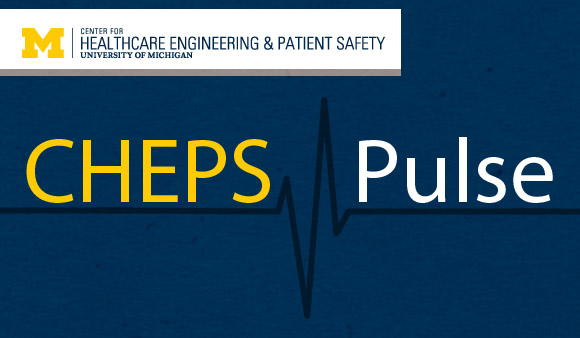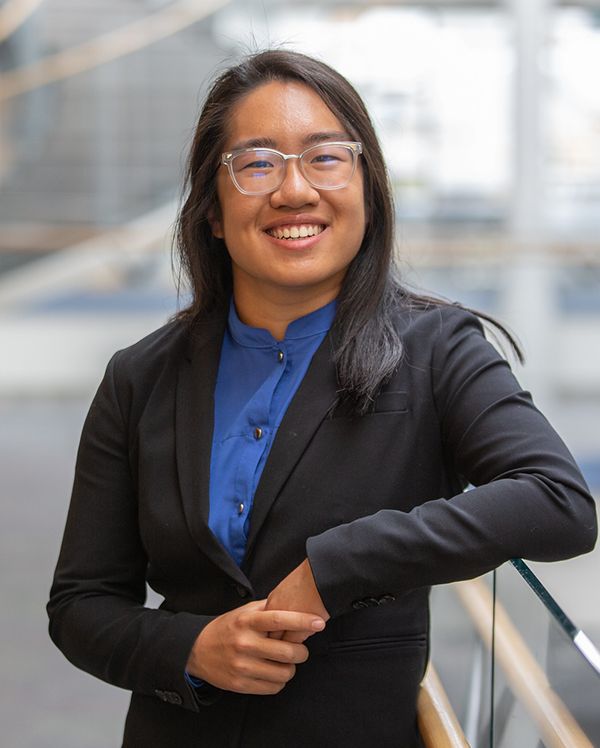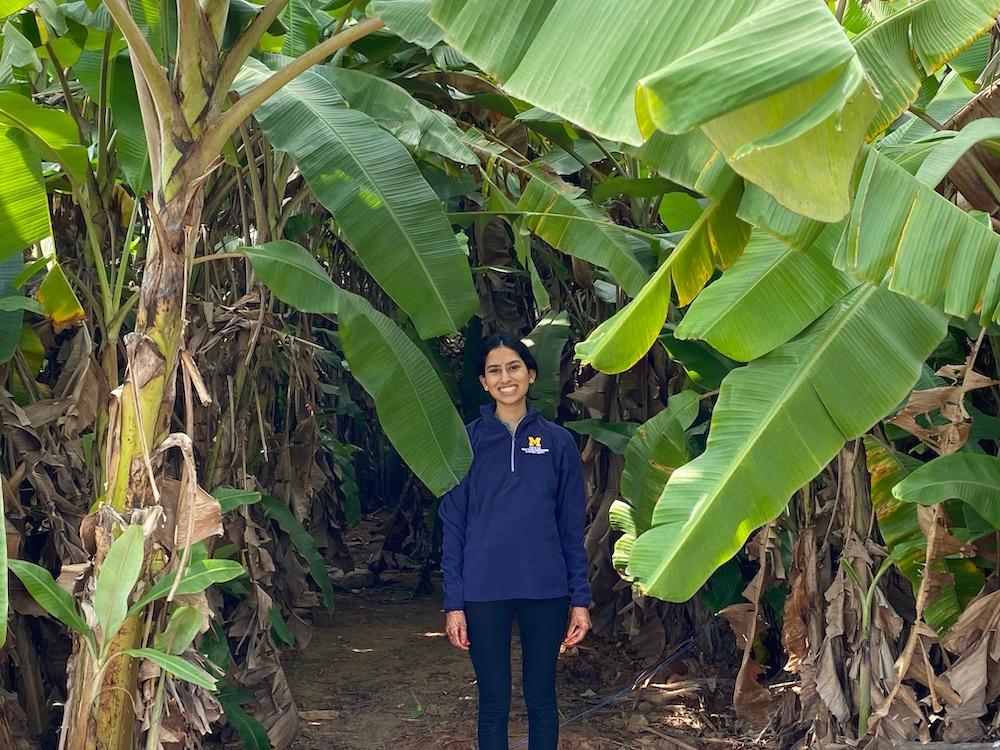
In This Issue
- Improving Scheduling of Acute Care Surgeons
- Recent News
- Giving BlueDay
- Videos from Fall 2021 Seminar Series
- Student Blog
- Where in the World is CHEPS
Improving Scheduling of Acute Care Surgeons
The Scheduling Challenge
Imagine you’re planning a family vacation. Your brother can’t get off work the first two weeks of the month, your cousin is in a friend’s wedding on the last Friday of the month, your sister hates cruises, your mother doesn’t want to go anywhere too cold, your other cousin wants to go somewhere with lots of vegan food options, and your brother-in-law wants to be able to bring his dog. If you want to schedule a trip everyone can attend and enjoy, there are tons of factors to take into consideration.
In the metaphor above, Dr. Krishnan Raghavendran would be the organizer of the family vacation; only he’s coordinating a group of doctors who are responsible for taking care of Michigan Medicine patients who often need life-saving care. He’s the Division Chief of the Division of Acute Care Surgery which handles traumas, emergency surgeries, critical care, and burns. They provide 24/7 coverage 365 days a year.
He explained, “There are eleven of us who provide this service and each one of us has a particular research interest.” The doctors are all also at different points in their careers meaning they have different demands on their time. There are other factors to consider such as the fact that a dedicated burn surgeon must do a certain number of burn operations per year to be qualified by the American Burn Association. People also request time off for professional reasons and vacations and want a fair distribution of holidays worked. It’s also important to avoid “clusters” – a situation in which someone might have five weeks on and then four weeks off which makes keeping up with their research difficult. “If the schedule is bad, I will be hearing about it for the next six months until the next schedule is made,” Dr. Raghavendran said. “And more importantly, it was extremely important for me to be fair. I’m transparent. And though there are always these contentious issues of how many weeks a particular person should be doing, there are no fixed formulas because it’s very hard to put a number on it.”


Left: Dr. Krishnan Raghavendran, Right: Billy Pozehl
Improvement Through Collaboration
Luckily, Dr. Raghavendran met Amy Cohn, CHEPS Faculty Director, and realized CHEPS had the tools to tackle the division’s scheduling problem. He recalled his first meeting with the CHEPS team in 2017. He and his coworkers sat down with the newly assembled CHEPS team and explained how the Acute Care Surgery Division and its sub-units work and what the scheduling needs were. “It’s a completely collaborative environment,” he said of working with CHEPS. “When we first met it was all about explaining the rules. Before you can come up with the call schedule, you have to have rules so we made rules.” After Dr. Raghavendran explained the unit’s needs, the CHEPS team was able to explain how they could incorporate these factors into their code to build the schedule.
Billy Pozehl, a researcher at CHEPS, has been on the project since it started. He said, “I can remember the first meeting we went to at the trauma office over at the hospital, which is in Taubman. And like a group of eight of us scrunched into a room that’s about the size of my office and started chatting about what their scheduling needs were, how they traditionally had built it, and the challenges that Dr. Raghavendran and his administrator had faced in terms of pushback from the faculty as far as dissatisfaction with the balance of holidays in particular.” People were also making so many requests that the schedule became impossible. Dr. Raghavendran often filled in more than his fair share of weeks just to make the schedule work. Billy said, “From the get-go, there was an emphasis on getting buy-in from everybody and agreement and consensus in terms of you can make x number of requests. You can prioritize them however you please, but this is the number of requests you get and you can’t make more because it’s unfair to everybody else.”
When it came time to create the first Acute Care schedule, the team only had about a month to deliver and the previous optimization work CHEPS had done was instrumental. Billy said, “That very first schedule we built, we were actually in, I want to say it was Atlanta. We were at a conference. So, we were sitting around in a conference room we found and built this schedule for them because they were under a time constraint. I don’t think we could have done that if we didn’t have the prior experience of all our other optimization work that we do. Putting something like that into practice can be really time-consuming if you don’t have the optimization template that we’ve already built at CHEPS.”
Now, about five years since that first schedule was built, the collaboration between CHEPS and Acute Care has settled into a comfortable rhythm. Ritvik Jillala, a BME undergraduate student working on the project explains, “We get some details from Dr. Raghavendran about who’s working, how many nights they want to work. He gives us their vacation requests, he gives us which units they want to work in, and how many nights they want to work.” After getting those details the team first constructs a day call schedule which shows who’s working during the daytime in what unit each week, they then construct the night call schedule which indicates who is covering each particular night.
Throughout this process, CHEPS sends schedules back and forth with Dr. Raghavendran to perfect the schedule and make sure it meets everyone’s needs. Caroline Hirth, an Industrial and Operations Engineering undergraduate on the project described the process, “Generally, the CHEPS team will draft several schedules that we believe are contenders. We send over those options along with some summarizing information to highlight the strengths and shortcomings of each. Dr. Raghavendran then gives feedback on what he likes/doesn’t like about the options we gave him, which helps us to draft more potential schedules or to revise the ones we already gave him. Once Dr. Raghavendran settles on a schedule he likes, he usually makes a couple of manual changes to make a ‘perfect’ fit.”


Left: Ritvik Jillala, Right: Caroline Hirth
Solutions That Benefit Everyone
Though the project is past its infancy, Billy said the number and types of requests and constraints still make every schedule interesting from an implementation standpoint. “As we build the schedule, how do we reconcile those issues? What problems that we identify within the schedule do we try to fix versus which do we ignore because they’re taking an unfair amount of prioritization within the schedule?” The team is also constantly working to improve the process. Right now they are developing an Excel tool to automate the process of converting time off requests to the respective start and end dates of the week(s) they fall within. The CHEPS Multi-Criteria Optimization (MCO) Team, whose work spans several CHEPS projects, is also working to combine the day call and night call optimization problems into a single model, where the output from the day call problem is treated as an input to the night call problem.
While Ritvik has appreciated working through such challenges and seeing the coding and scheduling work CHEPS does evolve and get perfected over multiple projects, another aspect of the project has been important to him as well. “Communicating with people in the workforce about projects that are happening in the real world was really new to me and really cool. Because at least in school we don’t really get that opportunity. We just work on group projects, turn things in for a grade, but we never have to actually employ the communication skills that are needed to be in a project that is trying to accomplish something in the real world. Being able to do that and having an impact is really neat to me.”
While students on the team get real-world experience and are able to deliver a tangible product each semester, the Division of Acute Care Surgery has gotten plenty out of the collaboration as well. Dr. Raghavendran said, “I do not put as much time into it as when I was doing it manually. And right now what happens is we make the schedule and the manual corrections are very few. And I think, overall, the satisfaction of the people within the group has been high. They get to see everything they have asked for and how it’s granted and they also get to see ‘how the sausage is made.’”
Thank you to Dr. Krishnan Raghavendran, Hadley Isely, Billy Pozehl, Caroline Hirth, Ritvik Jillala, Shraddha Ramesh, Weizhou Zhang, and all prior collaborators and CHEPS students who have contributed to this work.
Recent News

Giving BlueDay is coming up on March 16th. You can bookmark the CHEPS Giving BlueDay page here. We’ll have some exciting news about matches and challenges soon!

Our Fall 2021 seminar series is complete but many of the talks are available to view online.
CHEPS Student Blog Posts
CHEPS students blog to share life at CHEPS from the student perspective.

Rachel particularly values that CHEPS helped her better understand the importance of looking at the bigger picture when analyzing a problem and to “look at the multiple stakeholders involved beyond just doctors and patients.” Besides this, Rachel emphasized the importance of the interdisciplinary perspectives at CHEPS in terms of working with people across different majors and backgrounds. She’s learned to apply these principles to all problem-solving, not just in healthcare.
– from blog featuring Rachel Zhang, Biomedical Engineering Undergraduate
- Aparna Reddy, Bio/Anthro (Pre-Med) Undergraduate
- Rachel Zhang, Biomedical Engineering Undergraduate
- David Keller, Industrial & Operations Engineering Undergraduate
- Caroline Hirth, Industrial Operations Engineering Undergraduate
- Nicholas Zacharek, Industrial & Operations Engineering Undergraduate
- Surgical Competency Team
- Prenatal Team
- Shift Scheduling Team
- Leena Ghrayeb, Industrial and Operations Engineering Ph.D. Student
- Adam VanDeusen, Industrial and Operations Engineering Ph.D. Student
- Emmett Springer, Biomedical Engineering Undergraduate
- Sebastian Munoz, Industrial & Operations Engineering Undergraduate
- Pushpendra (Ishu) Singh, Industrial & Operations Engineering Master’s 2020
- Dean Golan, Industrial & Operations Engineering Undergraduate
- Matt Howard, Industrial and Operations Engineering Undergraduate
- Luke Liu, 2020 Industrial & Operations Engineering B.S.
- Renata Terrazzan, Public Health Undergraduate
- Alli VanderStoep, Industrial & Operations Engineering Master’s Student
- Ziqi Wang, IOE/HEPS Master’s Student
- Carolyn Wu, Informatics Undergraduate
- Kristine Wang, 2020 Computer Science B.S.
- Nicholas Zacharek, Industrial & Operations Engineering Undergraduate
- Matt See, 2020 Chemistry B.S.
Where In The World Is CHEPS?

Aparna Reddy is pictured visiting her family’s banana plantation in India during the 2021/22 winter break.
Center for Healthcare Engineering & Patient Safety | University of Michigan
[email protected] | cheps.engin.umich.edu

